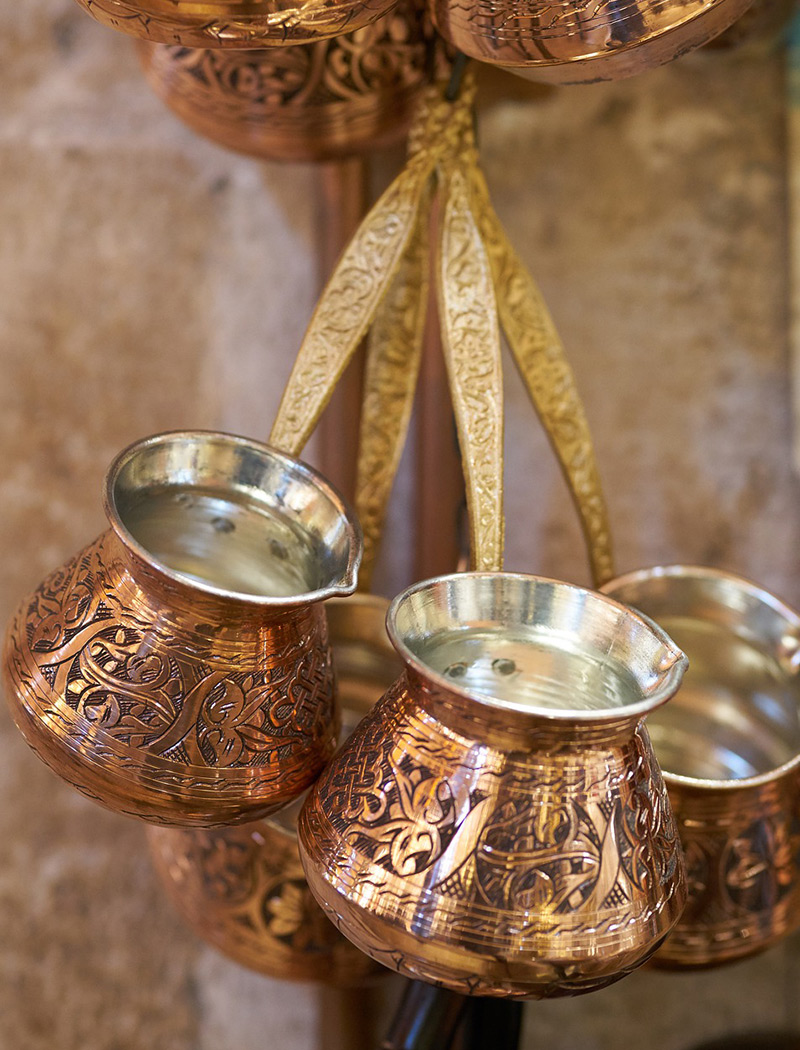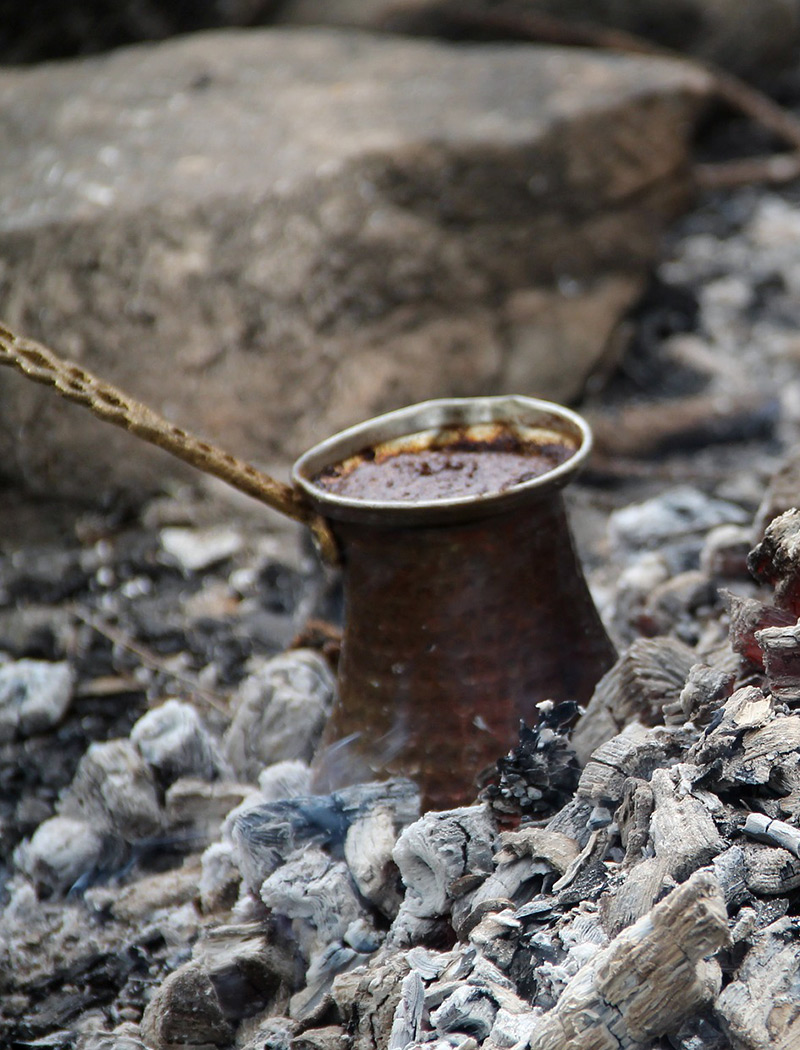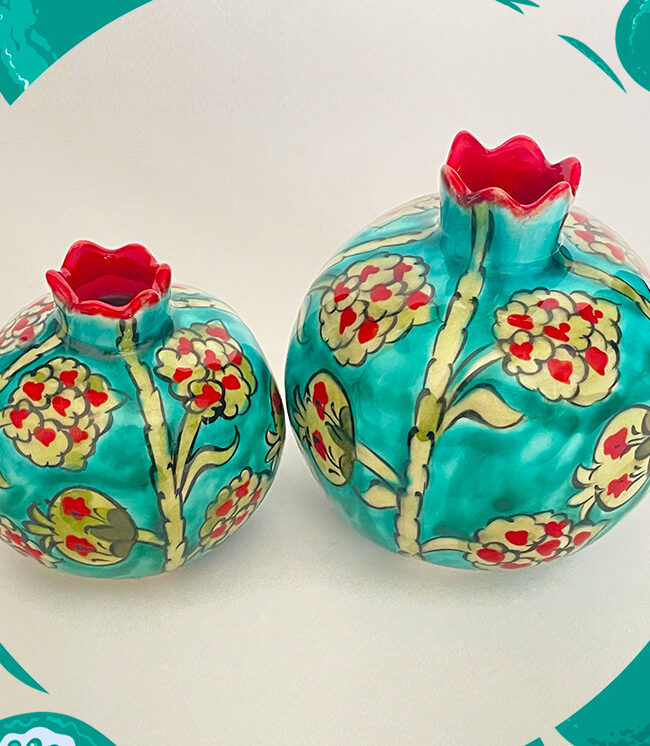
A brief history of Turkish Coffee and best serving methods
Turkish coffee is not just a new craze; it has been around since the 1500s. Initially, the governor of Yemen Ozdemir Pasha brought this new drink to Turkey in the 1540s. With intent to get the Ottoman Sultan on his side, Ozdemir gave him Turkish coffee to try. Of course, the Sultan was taken with this drink and requested his staff to make it.
The staff in the palace used a new way to make the coffee that included coffee made in a unique Turkish coffee pot (also called a Cezve). Everyone in the palace fell in love with Turkish coffee after that. Then, coffee specialists in the palace started creating coffee. Eventually, the coffee specialists began opening their coffee shops.
These coffee shops sold not only coffee but also delicious tea, among other drinks. The coffee shops started being obliged to close down in 1654 as they were said to prompt thoughts of revolt. In the late 1800s, under Sultan Abdul Aziz, coffee shops became popular again and started spreading worldwide. Now, you can find coffee shops on nearly every corner.
Marriage customs even include connections to coffee in Turkey. Young women are brought up and taught how to brew and serve coffee properly. These coffee etiquette lessons will serve them when they make coffee for potential suitors and their families in the future. As the potential bride is brewing the coffee for her suitor, she is expected to add some salt into his coffee. The brave future husband has to joyfully drink his salty coffee without hesitation in order to prove his love and dedication to her and pass the ultimate test.
The taste of Turkish coffee also deems it unique and remarkable. When you have your first cup of Turkish coffee, you’ll instantly notice a difference between coffee that you would find at your regular Canadian or American coffee shop. The differences start from how the coffee is prepped, how it is brewed, and how it is served. As for the taste, expect it to be strong and bitter before sweetened. It is concentrated and has a flavor as such. Turkish coffee is also described as having a salty and nutty taste. It is often served with traditional Turkish delight, so the bitterness is quite nicely balanced out.
Turkish coffee typically has a nice foam at the top and thicker consistency than American coffee. It is also served in small cups – usually, three to six ounces of coffee is in each cup. These specific cups are also known as demitasse cups or Turkish coffee cups. They are named so for their smaller size – demi means half and tasse means cup.

Wondering how to make Turkish coffee?
There are multiple methods available for making this coffee, though there are a few steps to prep the coffee before brewing it. First, Turkish coffee is ground finely. It is important to make sure the grind is correct before trying to brew. If you have a coffee shop nearby – see if they have any Turkish coffee as it will more likely be fresh.
Once you’ve sourced your coffee and ensured the type of grind is correct, you’re ready to brew it either by the sand method or stone method. Let’s dive into the sand method first.
Brewing coffee in a pile of sand might seem like an odd way to make coffee. However, sand is known for maintaining very hot temperatures for sustained amounts of time. This is what makes it an excellent method for making coffee.
Grab a pan or wok and some sand. You’ll want to fill the wok with several inches of sand (about three), then place it on your stovetop on high heat. Heat the sand through, making sure it heats evenly. You’ll want to have a copper Cezve as well for this. Grab your Cezve and add water, coffee, and sugar to each one. Then, put the Cezve into the sand. You’ll need a long spoon for this to help shift the sand out of the way and then up around the Cezve once they are deep enough. Do not touch the sand with your hands as it will be very hot. Before the coffee boils (it should have a nice foam), it is ready to be taken out of the sand. Make sure to grab something to protect your hand as Cezve are usually made completely of metal. Pour the coffee into each cup and let sit for a few minutes. You’ll want the ground coffee to settle on the bottom of the cup before drinking.
The second way of making Turkish coffee is on a stovetop. This requires fewer tools and steps. You’ll still want to have a Cezve to make the coffee in. Start by measuring out the water (based on how many cups of coffee you’re looking to make). Add it to the Cezve along with the measured out coffee and sugar. You want to let the coffee heat up until it’s foaming. Again, you’ll want to take it off the heat before it boils. Boiling will change the flavor of the coffee. You can either take the Cezve off of the heat once it foams or let it cool slightly, then heat/foam again before serving it in cups.
Regardless of which method you choose to make this delightful coffee, the best way to serve Turkish coffee is in original Turkish coffee cups. Not only does this enhance the experience, but it also keeps the tradition alive.
Turkish coffee should be sipped and enjoyed over time, so you can fully enjoy the flavor. Because of this, Turkish coffee cups are created out of thinner porcelain. The thickness of the cup assists in keeping the coffee hotter for longer. You’ll be able to extend your enjoyable coffee experience with Turkish coffee cups.
Check out our various Turkish coffee cup sets available on our website.













